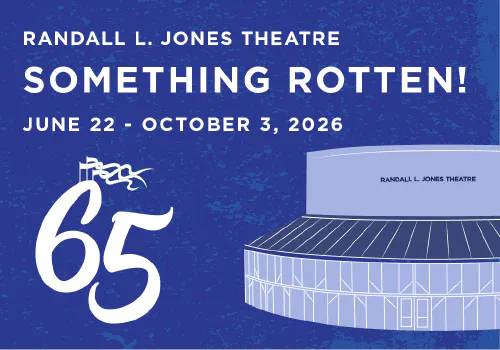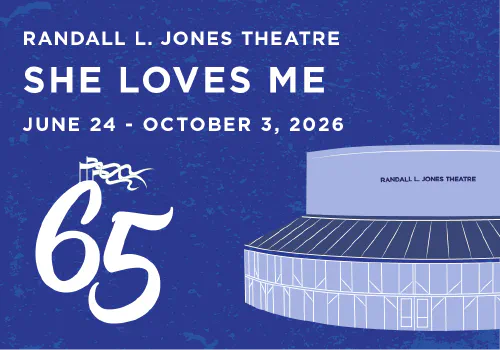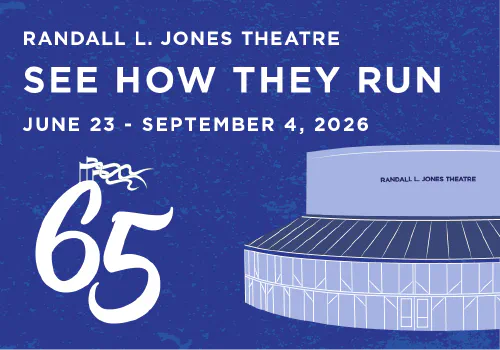By Don Leavitt
There is no business like show business, and nothing proves it quite like Moonlight and Magnolias. The play, an “if-these-walls-could-talk” comedy by Ron Hutchison, takes its audience behind the scenes of Gone with the Wind to show how three entertainment titans jerry-built one of the biggest movies in history. The three principle contributors bring different attitudes and ambitions to the process, using the movie’s production as a vehicle for exploring the entertainment industry, the politics of race, and the demands of artistic creativity. In the end, whether the film’s subsequent success is deserved or not is left for the audience to decide.
There is no question that Gone with the Wind was huge. Adapted from Margaret Mitchell’s novel, the movie opened in 1939 and was an immediate box office success. Its initial run lasted more than two years, during which an estimated 25 million people saw it; since then, the audience has grown through subsequent releases, television broadcasts and worldwide video distribution. At the time, it was nominated for fifteen Academy Awards and won ten, including best picture, best actress, and best director; today, it is widely considered one of the most popular American movies, and was named number four on the American Film Institute’s list of the top 100 films of all time.
But the road to success came with big problems and tremendous controversy. Producer David O. Selznick purchased the film rights in 1936 and then spent three years trying to get the movie made. No one thought the movie was a good idea. Selznick famously spent two years trying to cast the film’s iconic heroine, and is said to have auditioned every major movie star of the day before choosing Vivien Leigh to play Scarlett O’Hara. Principle photography began in January 1939 without a completed screenplay, and just three weeks into the production, Selznick suddenly fired the director, George Cukor, without explanation.
It’s at this point that Moonlight and Magnolias takes up the story. The production is at a standstill; desperate to save it, Selznick enlists the aid of his go-to men: Ben Hecht, a Chicago newspaperman turned screenwriter who has made a name for himself as a “script doctor,” fixing or finishing screenplays started by others; and Victor Fleming, the legendary Hollywood director who, at the time, was busy trying to complete The Wizard of Oz. Selznick hires Fleming to take over as director, and he offers Hecht $15,000 to take the latest version of the script and turn it into something he can use.
Unfortunately, Hecht has never read more than the first page of the book, and all he knows about the story is that it’s set in the South, has slaves, and involves the Civil War. Hecht thinks the movie is a terrible idea, and repeatedly reminds Selznick what a failure it’s going to be. “No Civil War movie has ever made a dime,” he says early on, and later, “I don’t know whether this is a very good bad book or a very bad good book, . . . but I do know you’ll never get a movie out of it.”
To prove him wrong, and to give him an idea of what to write, Selznick locks the three of them in his office for five days and proceeds, with the help of Fleming, to act out the entire story for Hecht while he types. That is the conceit of Moonlight and Magnolias, and it is from this that the play draws most of its comedy. As the days pass, the three men become tired and begin taking their frustrations out on each other; to keep the animals in his circus going, Selznick orders large quantities of bananas and peanuts. “They’re brain food,” he explains.
As a person, Selznick was obsessive and meddlesome. As a character, Selznick embodies the entertainment business and sees himself as the engine that drives Hollywood. “In the beginning was The Deal,” he says. “I pay you to write it the way I want it written and somebody like Fleming to direct it the way I see it. That’s called collaboration.”
Selznick makes movies to make money, and he knows this movie must be a success. “I need this, guys. I need it. . . . Give me a hit, fellas,” he pleads. At first glance, Selznick’s view of his profession seems rather unglamorous, but then he suddenly admits a reverence for the magic of movie-making. “What’s a movie?” he asks. “Specks of light stuck to a strip of celluloid… [an] authentic miracle. A series of moments frozen in time by the only time machine ever invented.”
Hecht, on the other hand, represents the industry as a vehicle for social change. At the time Gone with the Wind was being produced, Hitler had risen to power; as a Jew, Hecht was actively involved with groups like Jewish Relief, which raised money to help Jewish people flee Europe. In Moonlight and Magnolias, Hecht sees the tale of slavery and racial discrimination as an opportunity to tell his own story. He reminds Selznick that, as a Jew, he isn’t allowed to join certain clubs or live in certain neighborhoods; when Selznick asks him to leave his politics out of his movie, Hecht says, “Why don’t you take a real gamble and make a movie that could make America look its ugly face in the mirror?”
Selznick, of course, just wants to make a movie, and vows to remain faithful to the original story because that’s what he believes the audience wants. When Selznick asks him to write a scene in which Scarlett slaps a slave girl, Hecht refuses on principle. “If there’s anybody who can understand the legacy of prejudice it’s us Jews,” he says.
Meanwhile, Fleming embodies the industry as art, and, interestingly, contributes the least to the creative process, as if Hutchinson is saying that artistic creativity is the least important element in filmmaking. As the play progresses, we see flashes of the director envisioning shots and angles, but most of the character’s time on stage is spent defending his contribution. Fleming clearly sees actors, writers and producers as obstacles to his creativity; when Hecht claims movies start with the writing, Fleming says nothing gets said until he shouts action. “Are you going to sit up . . . because your actors refuse to come to work because they don’t like the color of their shower curtains? . . . even before the shooting starts somebody’s nagging at me—drop this scene, drop that scene, do you really need so many extras?”
In the end, Selznick’s viewpoint seems to win as he successfully makes the movie he wants. As commentary, Hutchinson seems to say that no matter the social impact or artistic value of a film, it’s really the money that counts. And yet, there is a moment when Selznick realizes there’s only so much he can do.
“You know who has the power . . . the real power?” he asks the others. “All those Joe Blows and Jane Does . . . all those little people who have nothing in common except they go to the movies . . . every ticket is a vote for my movie or a vote against it. . . . We don’t amount to anything if they give us the thumb down.” As the play closes, Selznick is obviously pleased with the outcome, but he knows that despite his efforts, the movie’s success is in the audience’s hands.










